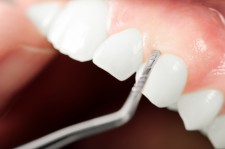
Pinhole surgical technique or PST has rapidly become one of the most popular ways of treating severe gum recession, both for dentists and their patients. Compared to tissue grafting, PST has a much shorter recovery time and results in far less post-procedural pain. Is the procedure covered by dental insurance is the only remaining question.
SACRAMENTO, Calif., October 18, 2018 (Newswire.com) - When it comes to dental insurance, patients are used to hearing bad news. Fortunately, pinhole surgical technique (PST) does not have to be one of these “bad news” items. A fairly recent treatment in the field of periodontics, it has gained rapid acceptance in the dental community and by dental insurance agencies. The Sacramento Dentistry Group was one of the early adopters of this procedure in the capital city. What is PST and what can patients expect from their insurance when it comes time to pay for it?
How PST Works
PST is an alternative treatment for correcting severe gum recession. Traditionally, dentists and periodontists have used gingival grafts, also called connective-tissue grafts (CTG), to cure this problem. The problem with CTG is that the procedure can require a painful recovery period and the need for graft material from the patient can limit how much of the mouth is treatable at one time. It is not unheard of for some clients to require multiple procedures and a full year before their gum recession is completely repaired.
As an alternative to this treatment regime, Southern California dentist Dr. John Chao developed PST in 2006. By applying techniques used during similar procedures, he created a method of curing gum recession that does not involve grafting or sutures. Instead, a small hole is made in the gum tissue, and the natural elasticity of the gums is used to pull them down and over the exposed roots of a number of teeth. Collagen strips are then used to hold the gums in their new position. With this technique, the entire mouth can be treated in just one session, making the patient’s life much easier compared to the time required for CTG.
Will Dental Insurance Cover PST?
To answer the question of insurance coverage, a dentist or specialist must know the specific policy used by the patient. All dental insurance varies in quality and coverage levels. As a result, some companies pay more for a patient’s PST treatment than others. Nevertheless, the majority of insurers now recognize PST as a legitimate and useful procedure for treating severe gum recession.
For more information about whether certain insurance covers PST, contact the Sacramento Dentistry group online at sacramentodentistry.com or by calling 916-538-6900.
Source: Sacramento Dentistry Group
Share:
